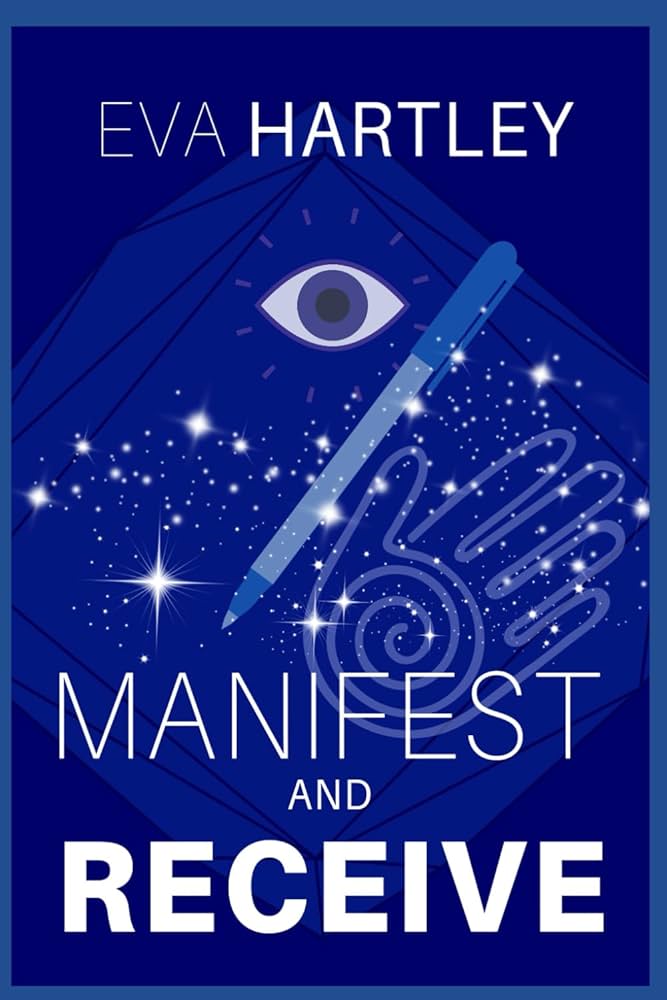Why This Book Found Me
During a quiet phase in my investing rhythm—when the numbers were steady but my inner compass felt foggy—I picked up Manifest and Receive by Eva Hartley. I wasn’t seeking a miracle. I was seeking clarity. What I found was a book that didn’t just speak to my mind—it recalibrated my pace.
Hartley’s writing is gentle, intuitive, and quietly powerful. She doesn’t preach manifestation as a shortcut to success. She invites you to realign with belief, emotional safety, and intentional living. For someone like me—who blends tactical investing with emotional awareness—it felt like a mirror I didn’t know I needed.
What the Book Offers: A Summary
Eva Hartley blends neuroscience and spiritual practice to help readers rewire limiting beliefs and attract abundance through aligned action. Her tone is conversational and grounded, making complex ideas feel accessible.
Core themes include:
- Energetic alignment: Acting from clarity, not fear
- Receiving without chasing: Letting go of control while staying intentional
- Self-trust and emotional clarity: Building inner safety before outer success
- Manifestation rituals: Visualization, journaling, and belief reprogramming
“You don’t manifest what you want. You manifest what you believe.”
This line became a quiet mantra for me—especially in moments of doubt or creative friction.
Chapter Reflections That Shifted Me
✦ Energetic Flow
Hartley emphasizes that aligned action isn’t about doing more—it’s about doing less with more clarity. This reminded me of how I approach phased buying: slow, intentional, and emotionally buffered. I don’t chase trades. I prepare, align, and receive.
✦ Let Go of the How
This chapter felt like a direct nudge to my inner planner. I often build workflows with precision, but Hartley’s reminder to trust the “why” over the “how” softened my grip. It helped me release rigid timelines in blog planning and lean into emotional resonance.
✦ Rewire to Receive
Here, she dives into belief reprogramming—how our subconscious shapes what we allow ourselves to receive. I began journaling not just my goals, but my emotional comfort around them. It shifted how I write, invest, and even how I curate visuals.
Personal Growth and Creative Integration
Since finishing Manifest and Receive, I’ve noticed subtle but powerful shifts:
- I track emotional comfort before and after decisions—not just in investing, but in blogging and travel planning
- My captions feel less performative, more present
- I let visuals lead the narrative, trusting clarity will follow
- I softened my self-talk during creative blocks and tech frustrations
Even my travel planning changed—from checklist-driven to curiosity-led. I now ask: Is this aligned? Is this emotionally clear?
✍️ Lifestyle Applications
This book didn’t just influence my mindset—it reshaped my creative rhythm. I began writing blog drafts with less pressure and more presence. I stopped chasing perfect captions and started letting my visuals breathe.
It also nudged me to rethink how I approach lifestyle content. I now ask:
- Is this post emotionally clear?
- Does it reflect belief, not just effort?
- Am I creating from alignment or obligation?
These questions have become part of my process—whether I’m designing a carousel, planning a reel, or writing a book review like this one.
Since finishing Manifest and Receive, I’ve noticed subtle but powerful shifts:
-
- I track emotional comfort before and after decisions—not just in investing, but in blogging and travel planning
♀️ Final Thoughts: A Quiet Mirror
Manifest and Receive didn’t offer shortcuts. It offered alignment. It became a quiet mirror—reflecting the parts of me that were already clear, and gently pointing to the ones that weren’t.
Whether you’re building a portfolio, a blog, or simply a more intentional life, this book invites you to pause, align, and receive.
If this reflection resonated with you, my Mindful Investing series dives deeper into how emotional comfort and belief shape financial decisions. Explore it [here].”
Frequently Asked Questions
Q: Is ‘Manifest and Receive’ suitable for beginners in manifestation?
A: Yes. Eva Hartley’s writing is intuitive and accessible, making it ideal for readers new to manifestation and emotional clarity.
Q: What makes this book different from other manifestation guides?
A: It blends neuroscience with spiritual practice, focusing on belief alignment rather than just rituals or affirmations.
Q: How can I apply this book to my daily life?
A: Through journaling, emotional check-ins, and intentional decision-making—whether in finances, creativity, or relationships.
Related Posts You Might Enjoy
“If you’re exploring belief reprogramming, you might also enjoy my review of The Power of Your Subconscious Mind.”















